
upload photo | donate | calendar
 |
my profile |
register |
faq |
search upload photo | donate | calendar |
|
|
|
|
#1 |
|
User
Join Date: Oct 2007
Location: Maryland
Posts: 365
Thanks: 48
Thanked 136 Times in 60 Posts
|
In this post, we will finish up looking at the rifle itself. To do that, we need to talk about the bolt carrier.
The bolt carrier consists of three basic parts pinned together to make one unit which cannot be disassembled. At the rear is the bolt carrier proper. It holds the firing pin in place via the yolk machined out of it. This yoke also acts as a cam that causes the bolt to rotate as it moves back under gas pressure and forward under spring pressure, unlocking and locking the action in the process. In the middle is the operating rod. Its job is simply to connect the gas piston to the bolt carrier. The charging handle plugs into the operating rod too. Up front is the stainless steel gas piston. It's the part that takes the impact of the gas tapped from the barrel which drives the entire assembly to the rear. We'll start with the rear of the unit: 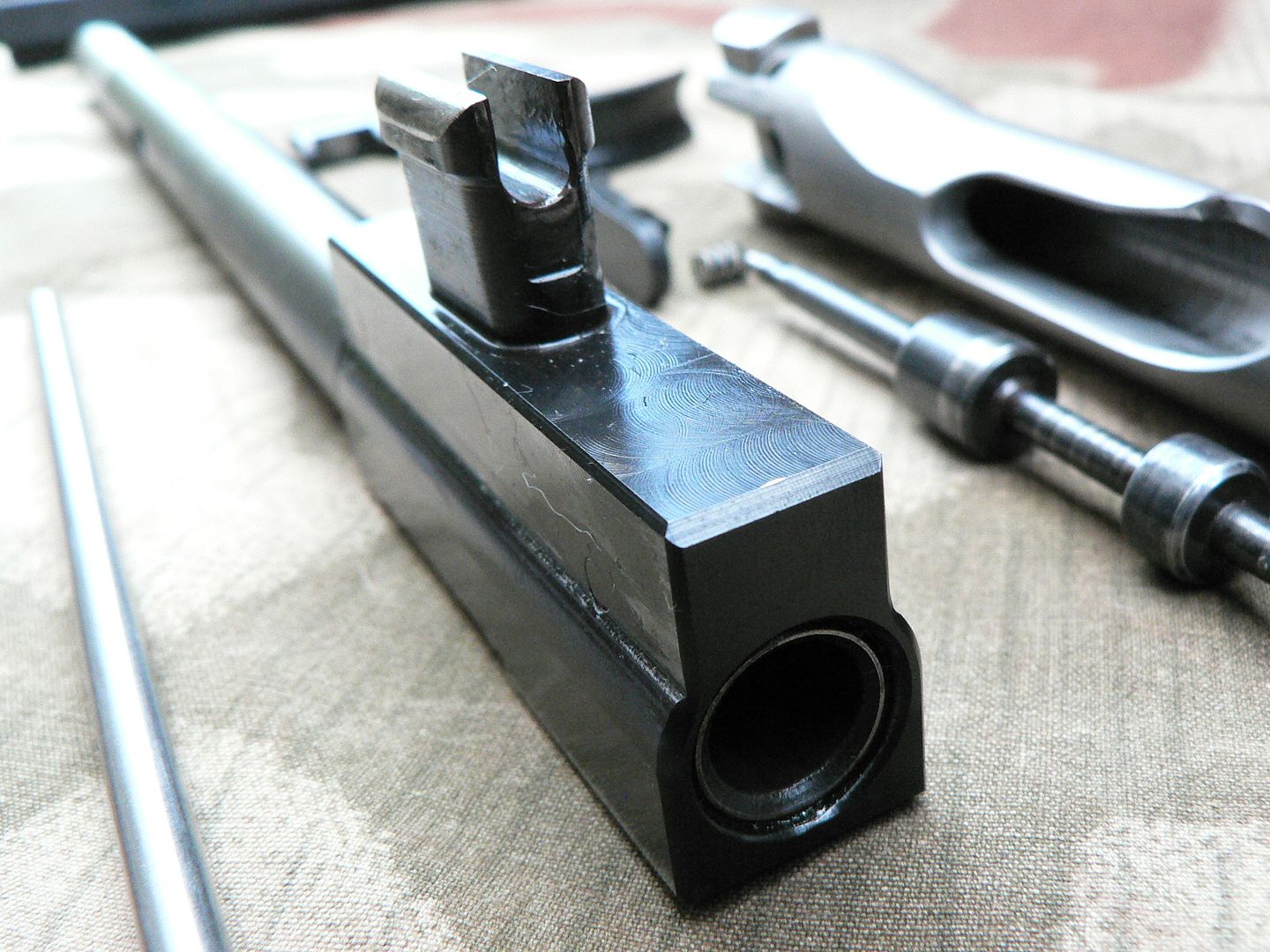 The hole in the rear is where the recoil spring fits. The thing in that hole that looks like an insert is actually the rear of the operating rod. Inserted from the front, it passes all the way through the bolt carrier and is pinned in place. The pin is just barely visible above the step running up the side of the carrier. In this view of the right rear, the pin is more visible: 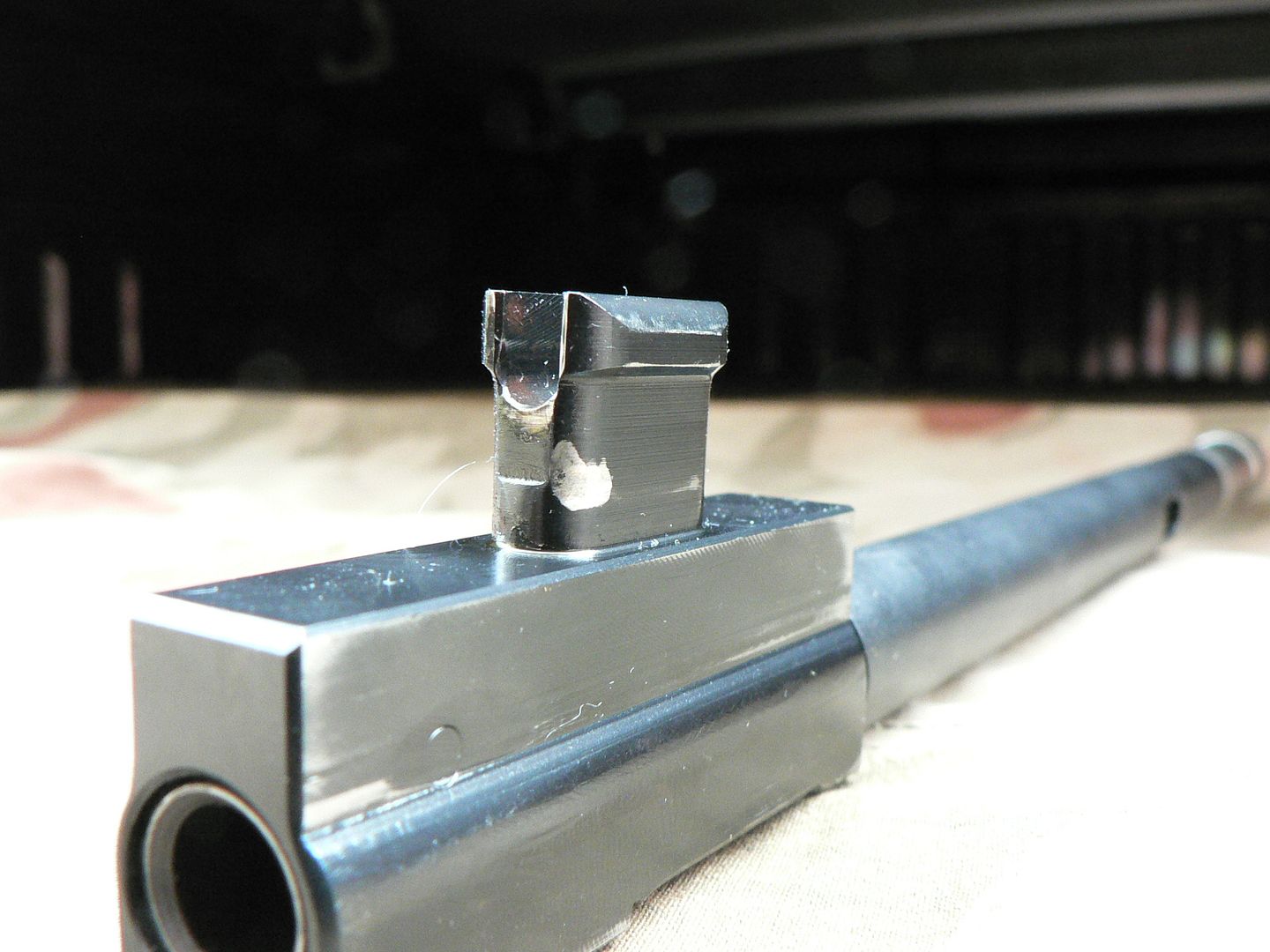 Also of note in the above picture is the wear mark on the right rear corner of the yoke where it contacts the cam slot in the bolt. Here is a view of the front of the carrier showing marks where the left front of the yoke contacts the bolt during operation: 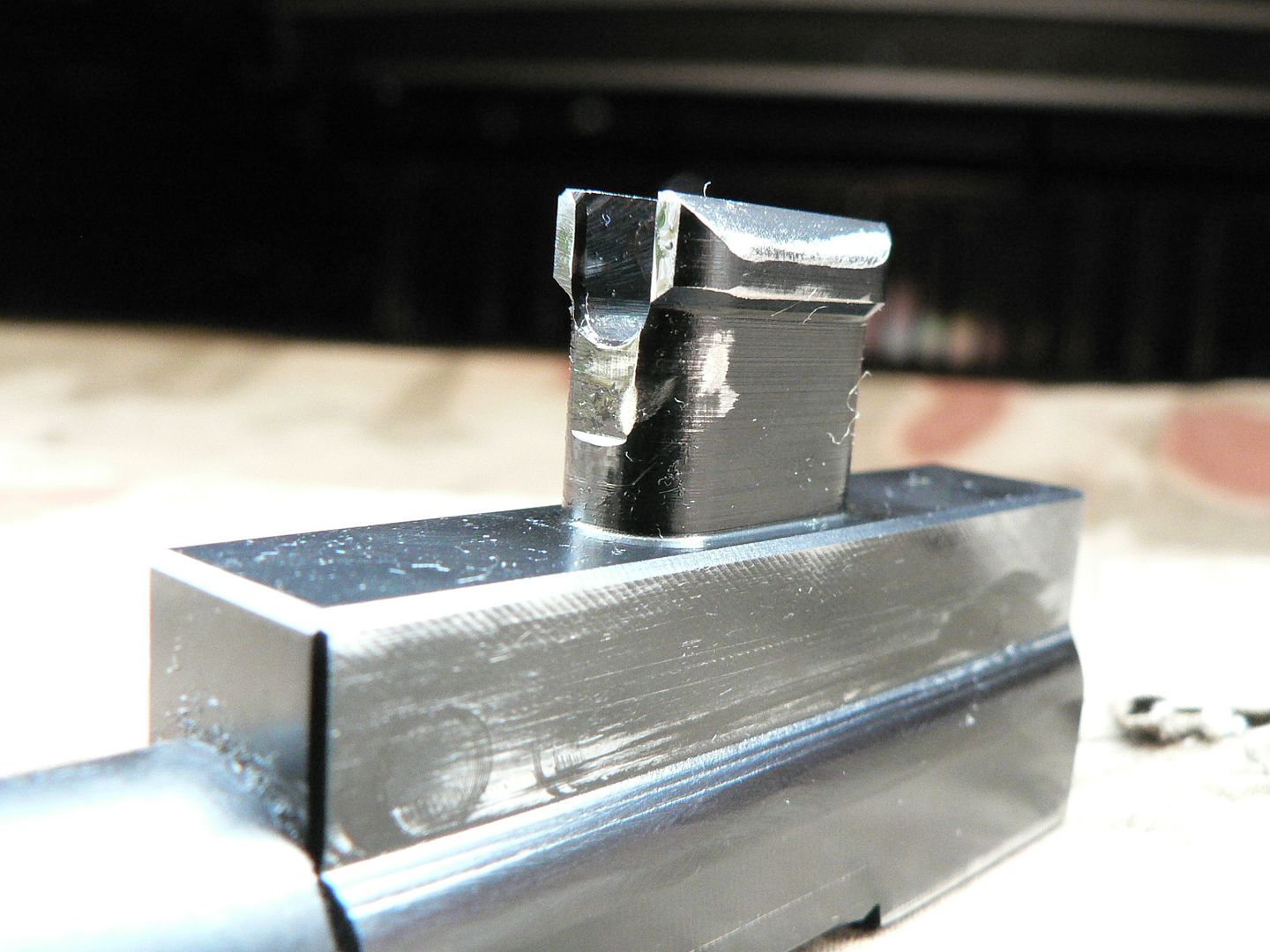 Judging by the circular mark above the step in the side of the carrier, there may be a second pin holding the operating rod place but I'm not sure about that. That mark may simply be a machine mark. I assume that the yoke must take a tremendous beating as it does its job because it was a common failure point in rifles tested during the war. The only thing of interest on the operating rod is the cutout for the charging handle: 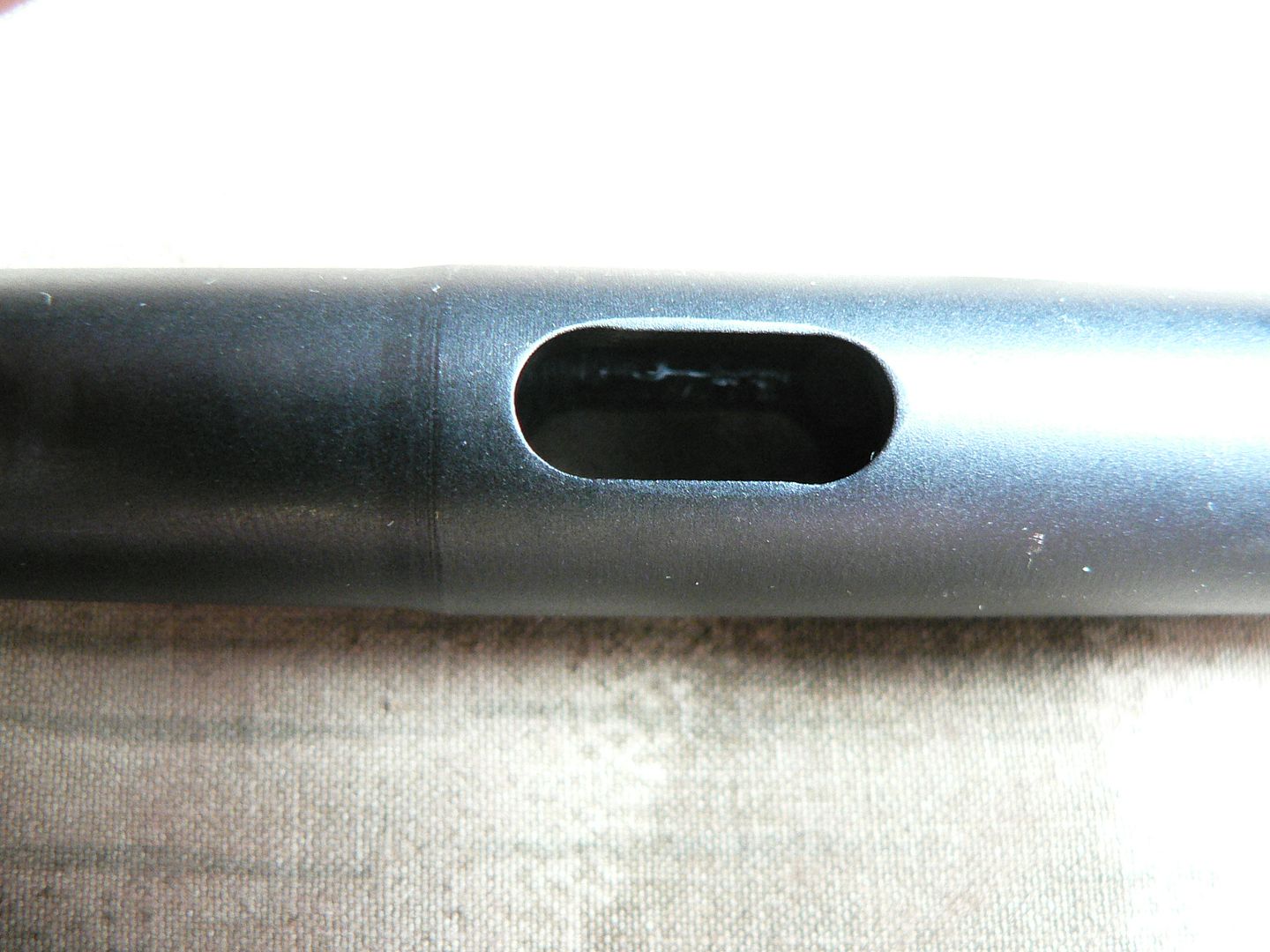 Hidden inside the operating rod is a non removable plunger. When the recoil spring is in place, it pushes the plunger forward and into engagement with a notch cut into the charging handle stem, locking it in place on the operating rod. Here, the plunger has been moved forward until it is visible in the cutout: 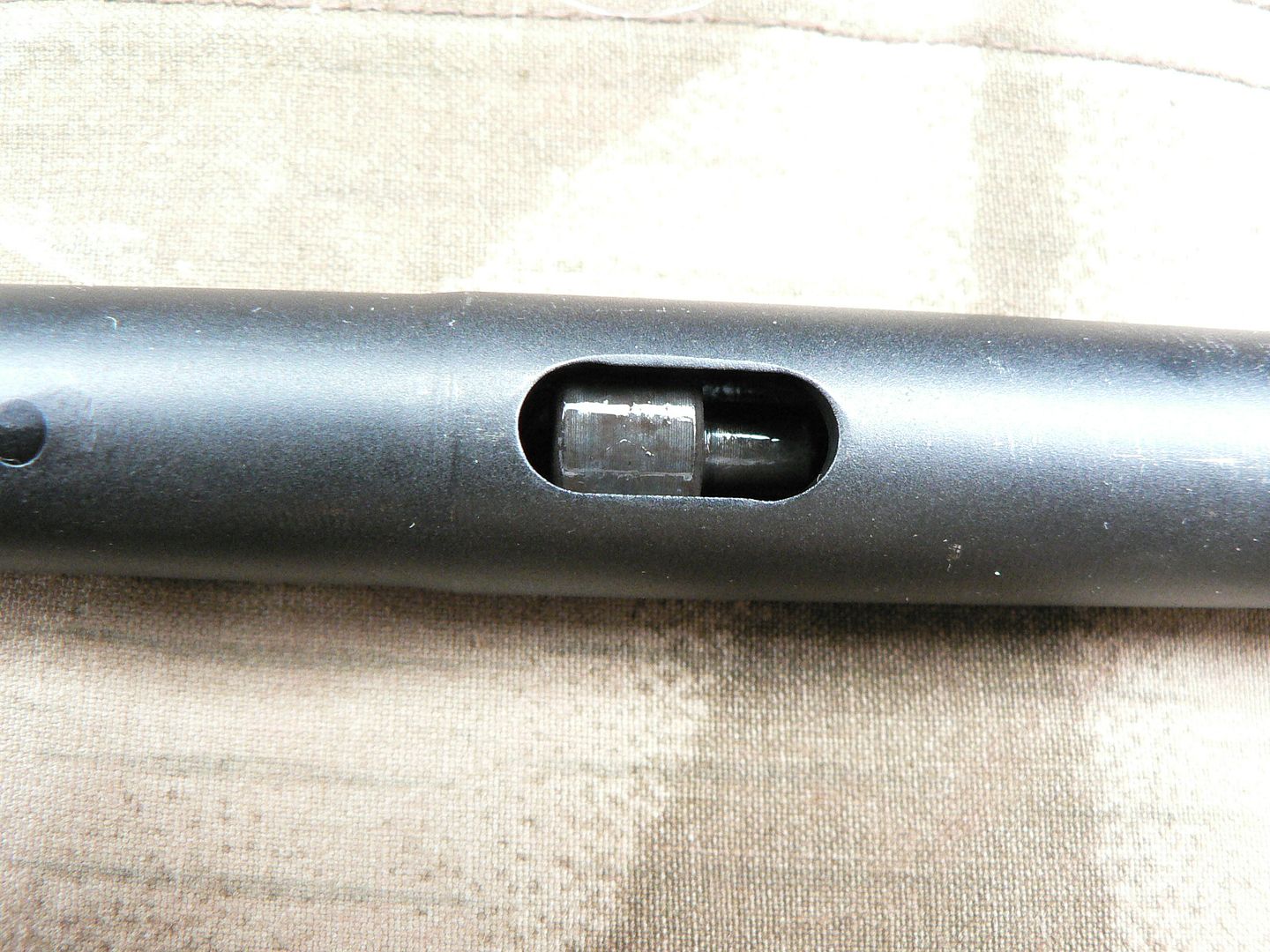 All the way at the front of the assembly is the gas piston: 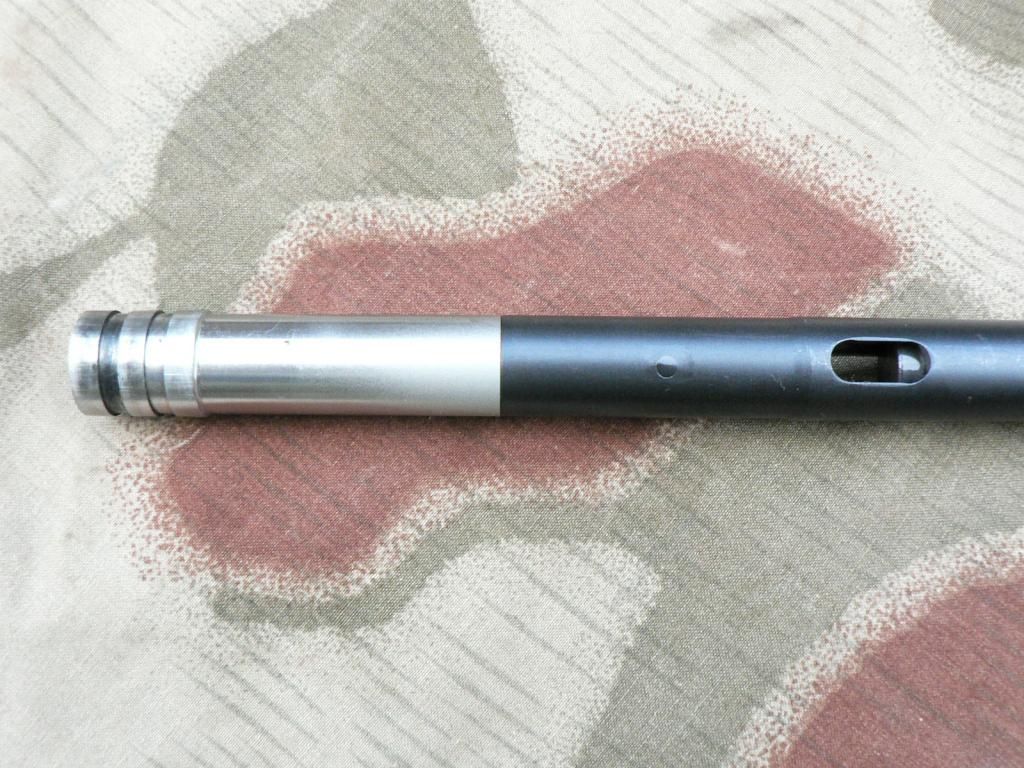 It is inserted into the operating rod and pinned in place. The pin is visible in front of the charging handle cutout. A detail shot of the gas piston: 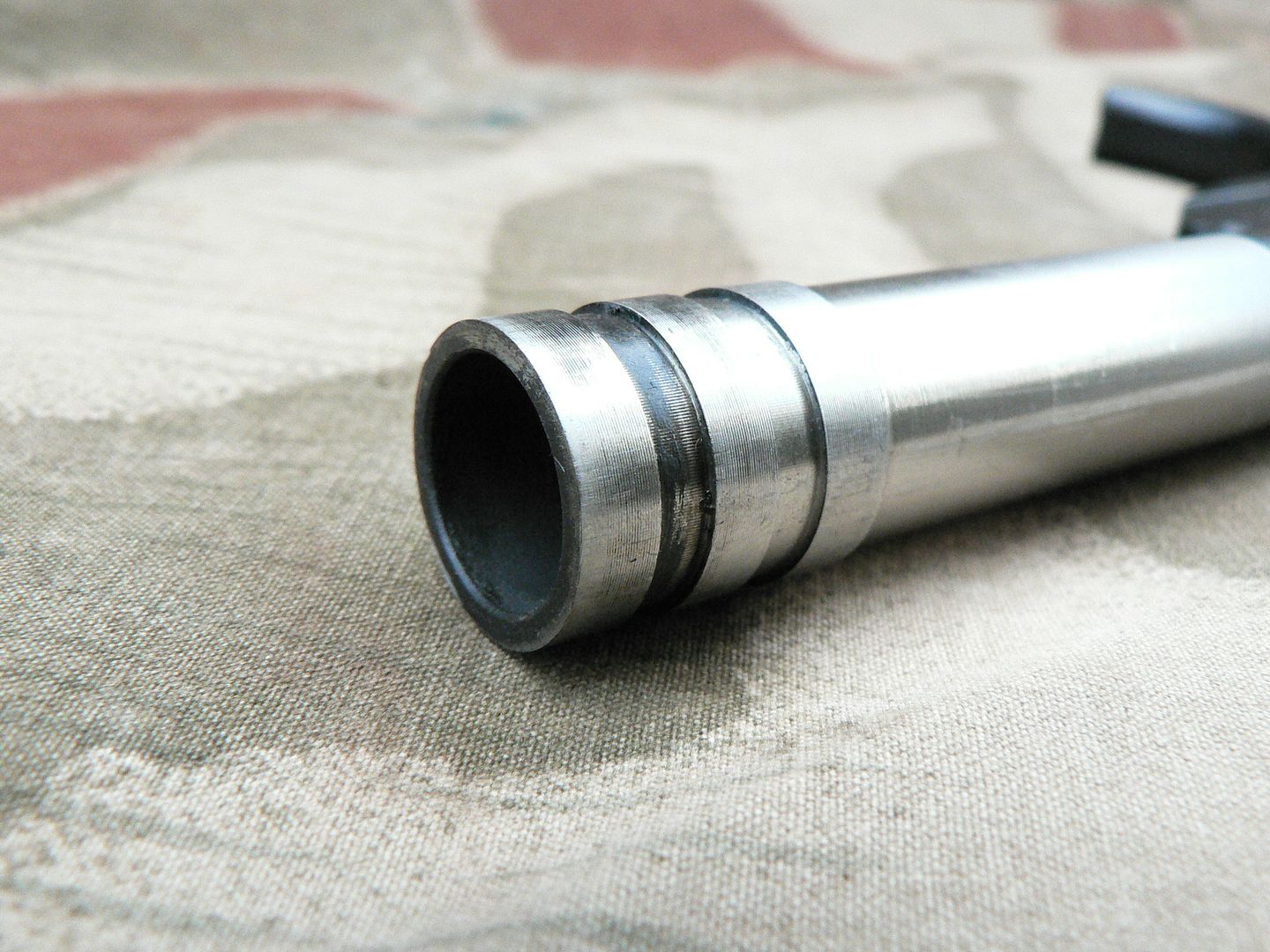 That's it for the internals. Here's a nice neat picture of all the bits and pieces disassembled including the standard round that the rifle fires: 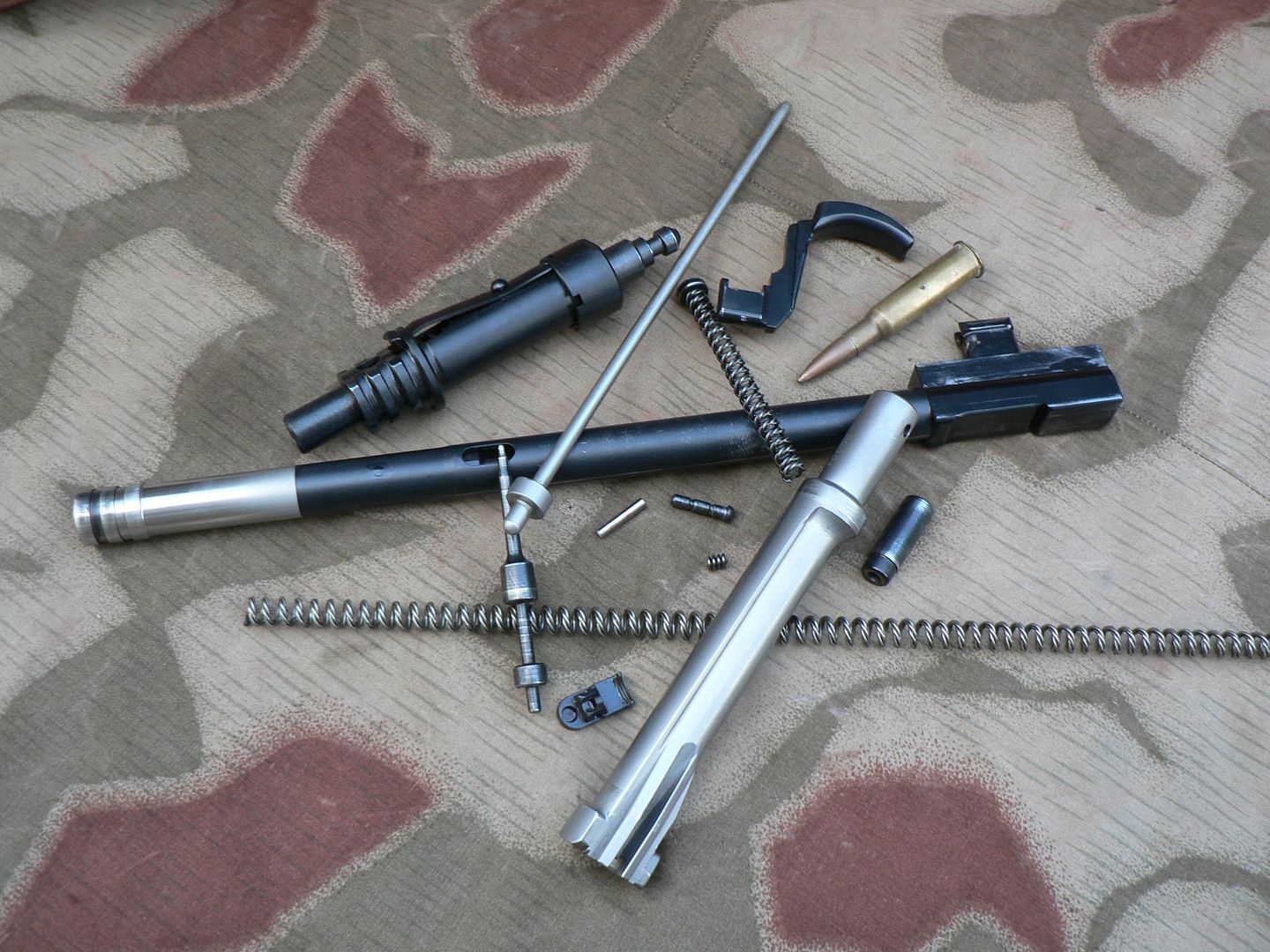 OOPS! How did that 7.62x54 round get in there?? Let's try that again with the proper Turkish 8mm round: 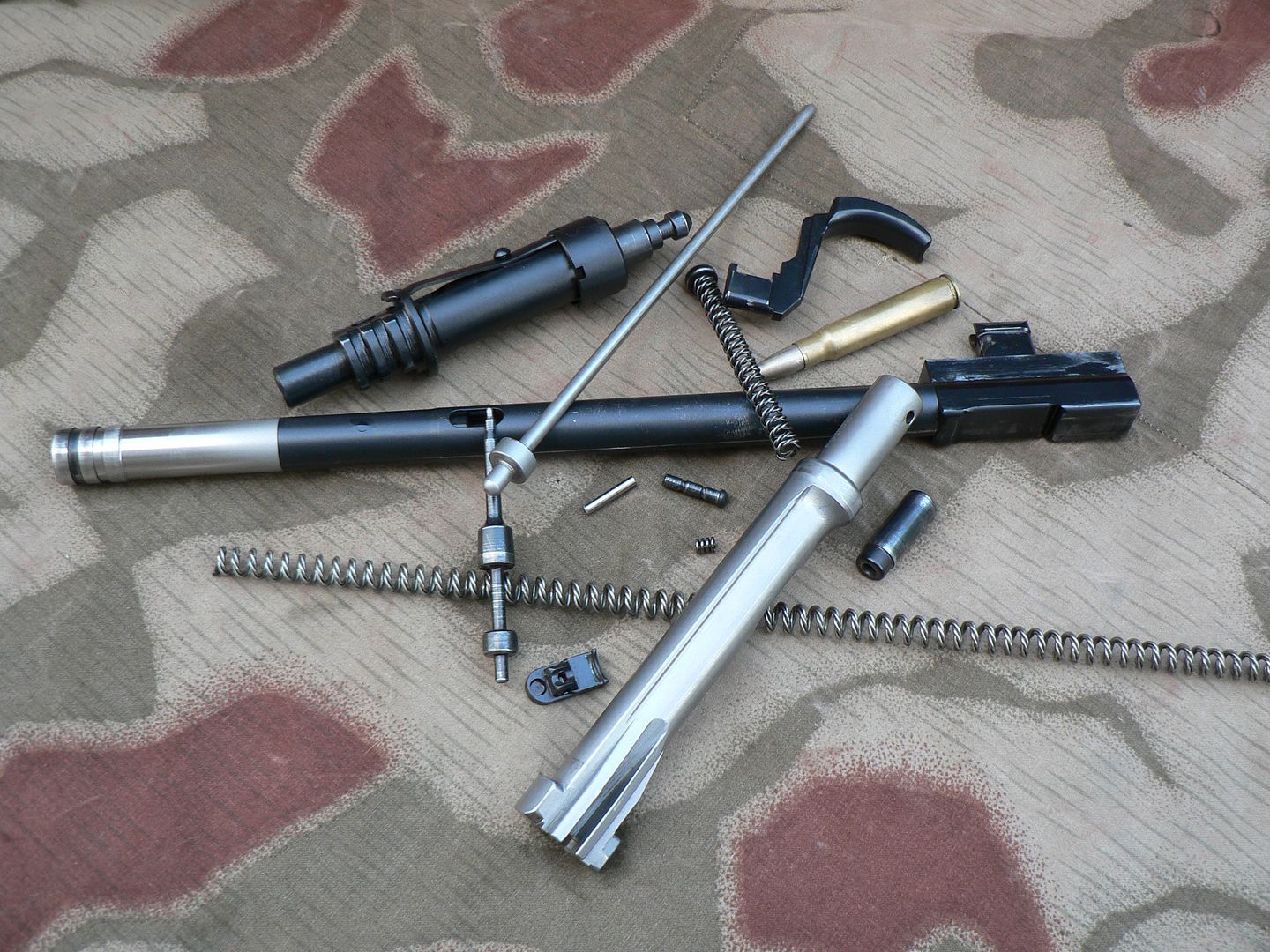 NO NO NO!!! DO NOT UNDER ANY CIRCUMSTANCES SHOOT TURKISH 8mm THROUGH THIS RIFLE. For that matter, don't shoot the Turkish stuff through ANY 8mm rifle except for a bolt action. If you do, you are risking not only your rifle but your life as well. DON'T DO IT!!!! Am I clear on that? Alright, here is a family picture showing all of the internals. I'm not going to list each part because you should already know what they are if you've stayed awake and read everything: 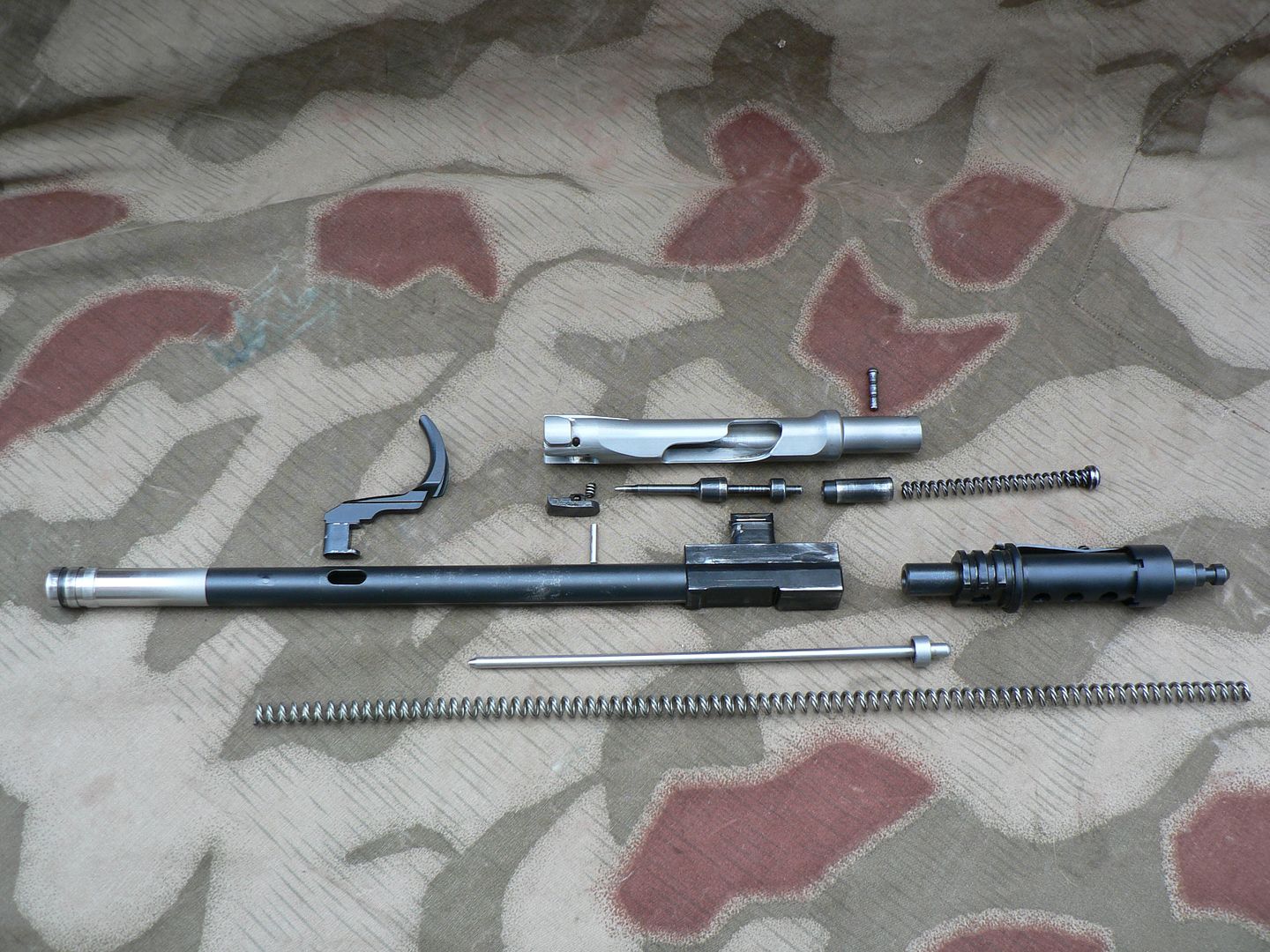 These next photographs are just miscellaneous shots of the empty receiver and a few notes about them. Inside of the magazine well showing how clean the weld line is where it meets the receiver. The only evidence of the weld is a slight hump: 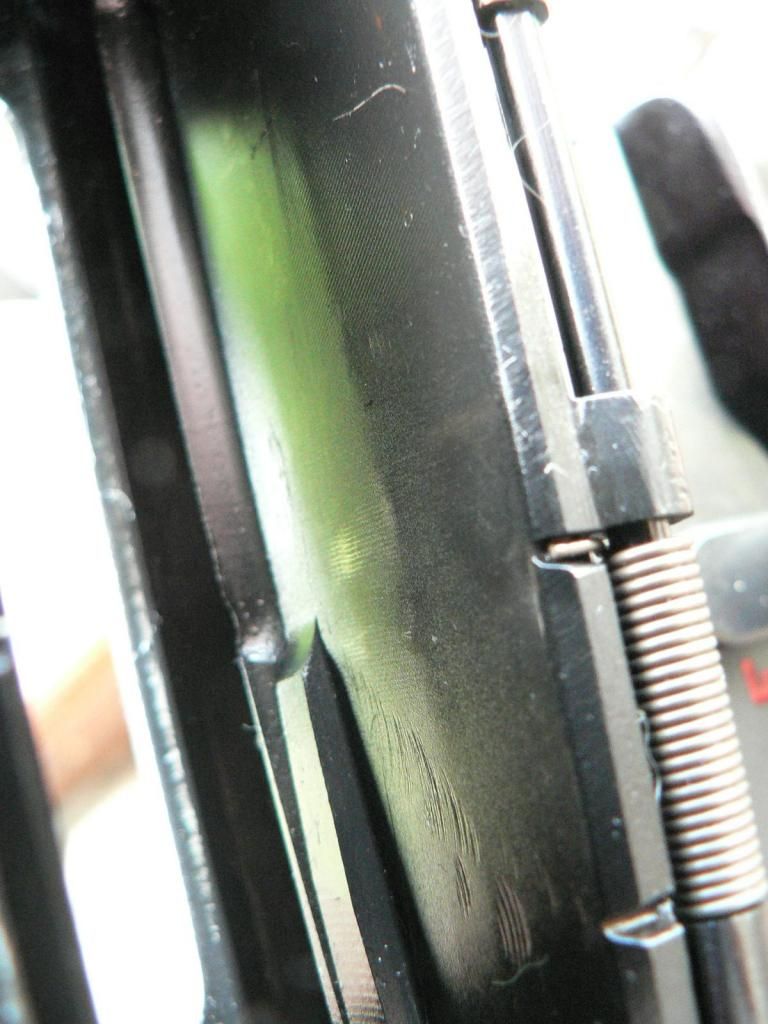 The area at the front of the magazine well which engages the front mounting lug on the magazine: 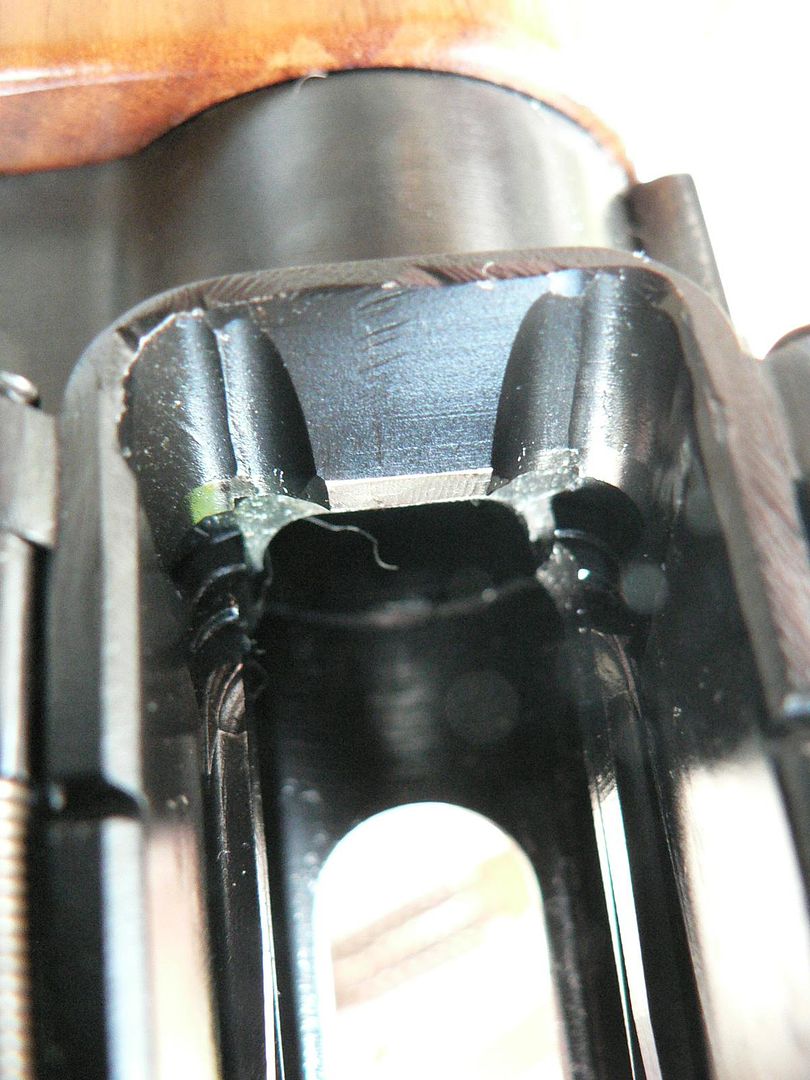 A view through the ejection port showing the single spring used for both the magazine catch and the ejector: 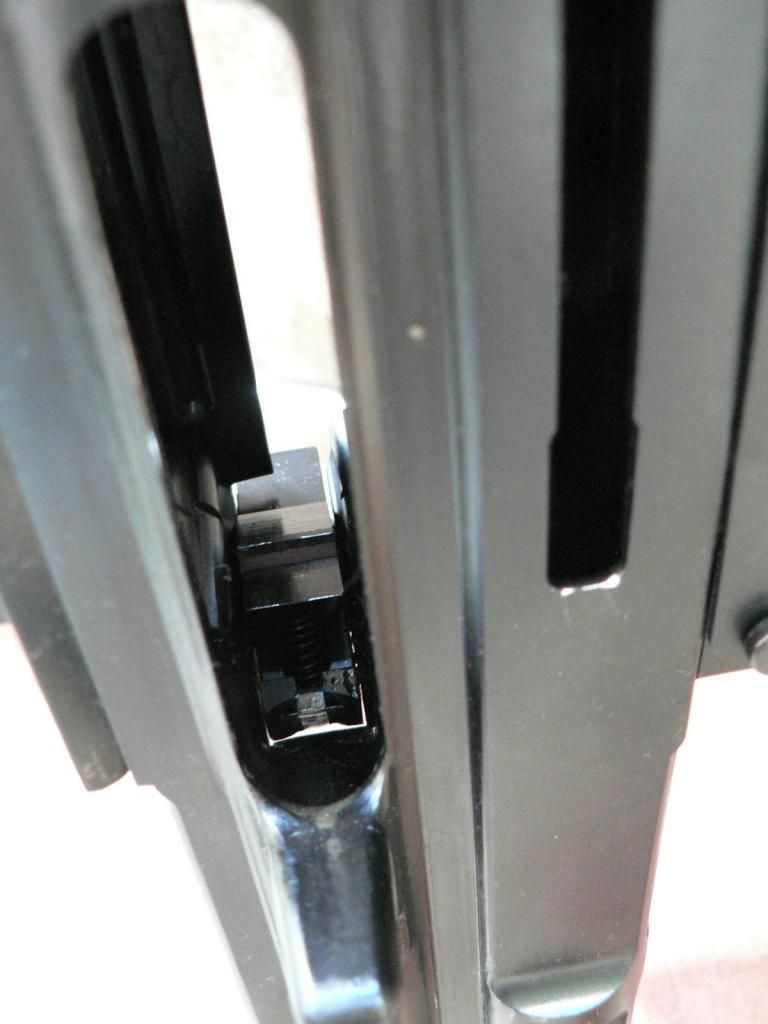 A view up into the breach showing part of the trunnion and one of the cuts for a locking lug on the bolt: 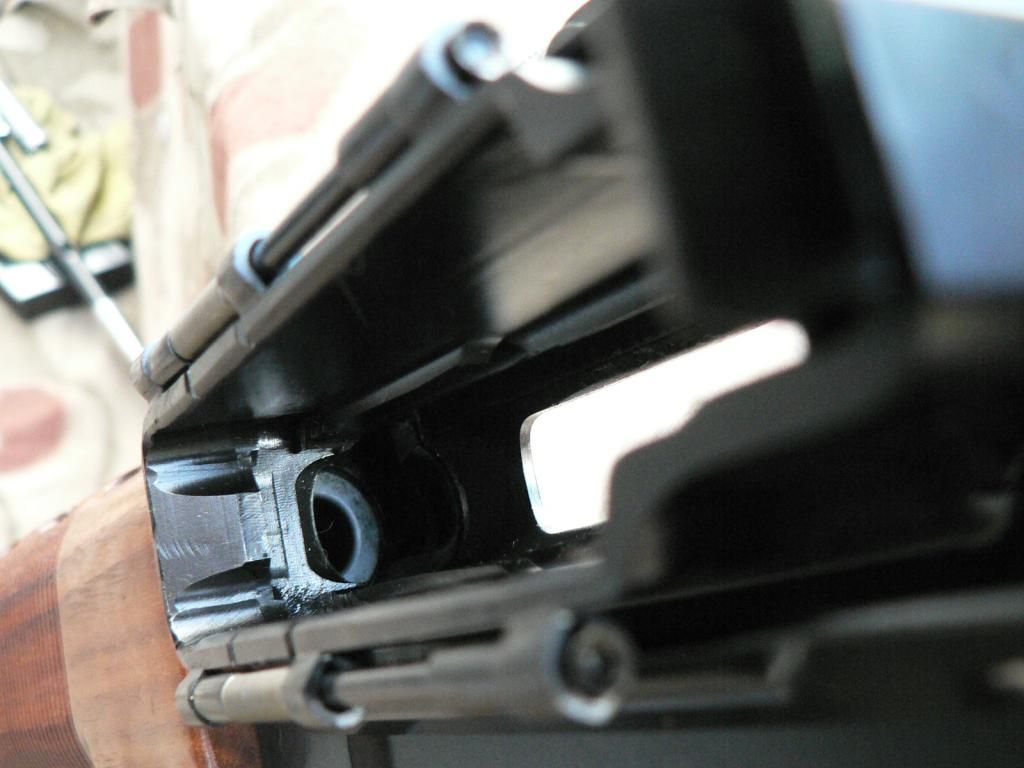 And finally, the ejection port: 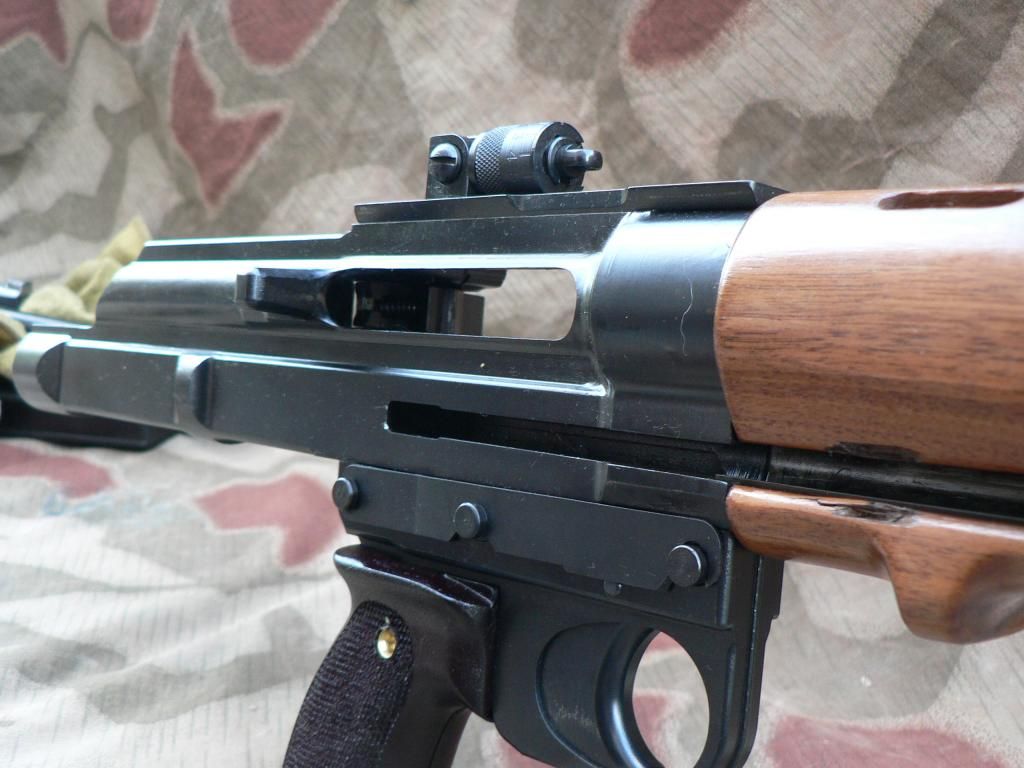 A note about this opening. If you are like me, you'll stick your finger through any opening in the receiver while cleaning in an effort to get to any powder residue and funk that has accumulated through use. DON'T stick your finger in this hole. On my rifle at least, the inside edge of the ejection port was not polished so it's as sharp as a knife. I stuck my finger in there and it was cut on both sides immediately. That felt really nice with Hoppes #9 all over the place........ That's it for the rifle proper. We're in the home stretch. In the next post, we'll start looking at the accessories beginning with the magazine. Bye for now! |
|
|

|
 |
| Thread Tools | |
| Display Modes | |
|
|